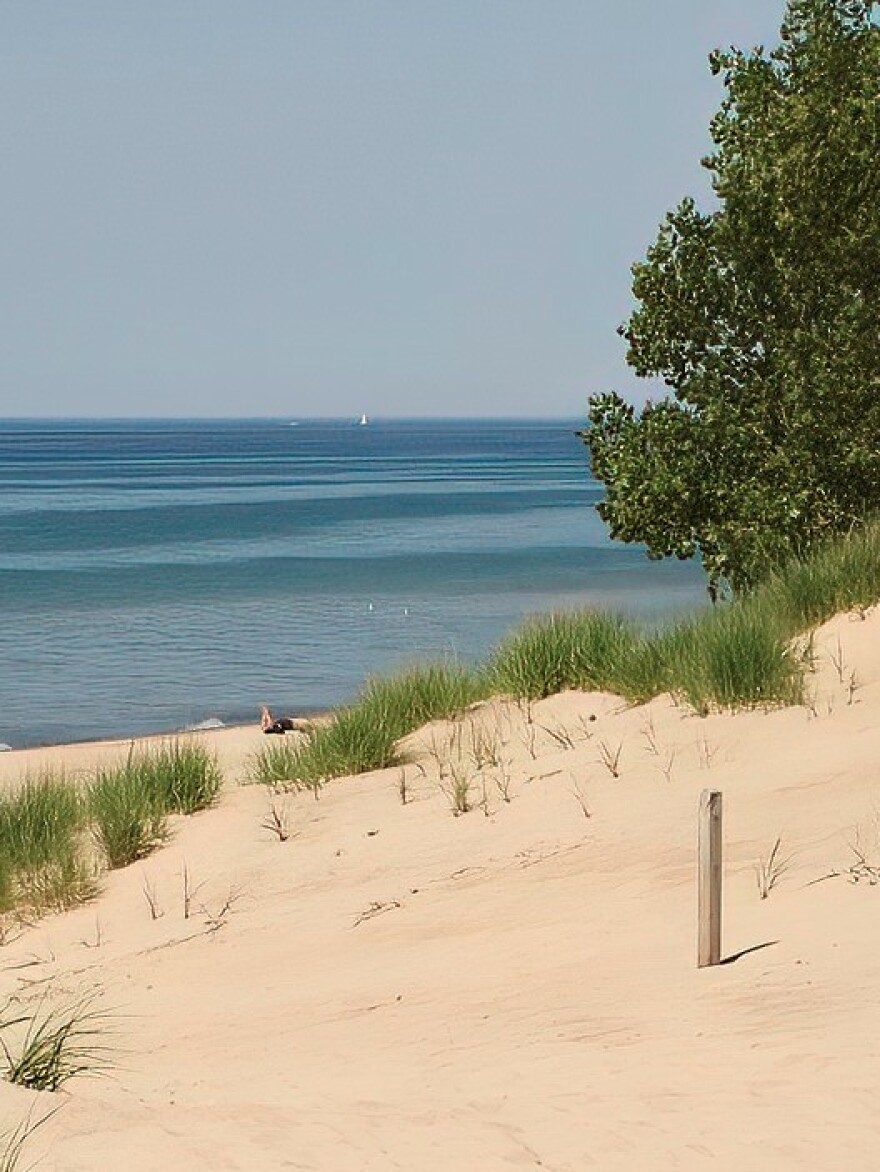“It was so obvious during the pandemic that parks were important when the only place that you could get some exercise was outdoors in a park,” Pamela Barnes, chief information officer for Cuyahoga Valley National Park, said. “We hope that sticks with people, that they remember that parks are here for them.”
Throughout the COVID-19 pandemic, many Great Lakes national parks experienced record visitation as people sought to experience the outdoors and participate in safe forms of recreation.
Sleeping Bear Dunes National Lakeshore was one of those parks. According to unofficial data from the National Park Service, over 1.7 million people visited in 2020, the highest attendance on record.
In 2021, the park is on track to break that attendance record again, even though other forms of recreation and entertainment like indoor gyms and concerts are now open. Almost 1.7 million people have already visited the park with two months remaining in the year. But that hasn’t been the case with parks across the board.
Merrith Baughman is director of visitor services at Sleeping Bear Dunes. Baughman said that the continued strong attendance can be partially attributed to a continued desire for safe family activities like exploring a new trail. There are also returning visitors who first discovered the park during last year’s surge.

“We had a lot of new campers last year, new people last year, and they really got excited about coming back to the park. A lot of people who have never been here before don’t realize everything that there is to do,” she said.
Increase or decrease? Depends on the park
For the most part, attendance at other parks in the Great Lakes Region is on track to break records again in 2021. Pictured Rocks National Lakeshore and Indiana Dunes National Park have already broken their 2020 attendance records.
Other parks are seeing something different.
In 2020, Cuyahoga Valley National Park saw a significant increase in attendance because of the COVID-19 pandemic, with 2.76 million visitors compared to 2.24 million in 2019.
This year, however, Cuyahoga Valley has seen a decrease in attendance compared to last year. The park’s attendance numbers are down about 34% from 2020 through August 2021, the most recent month for which attendance statistics have been reported. By the numbers, attendance in 2021 has been more like 2019 than 2020.
Barnes, chief information officer for Cuyahoga Valley National Park, said that the reason for this decline is unclear.
“There’s a lot of other options of things to do. It could be weather related. It could be a lot of factors,” she said.
Despite the decrease in attendance numbers, Barnes said that, at least on the ground, visitation in the summer of 2021 still seemed like the summer of 2020.
“Some of our popular trail heads filled up very fast, and we spent a lot of our staff time out in parking lots talking to folks, helping them plan another place to go,” Barnes said.
Unlike Cuyahoga Valley, Indiana Dunes National Park has seen a significant increase in attendance this year. In 2020, the park saw about 2.2 million visitors, a modest yet record-setting increase from the year before. This year, the park has already welcomed almost 2.7 million visitors.

Bruce Rowe is a supervisory park ranger and public information officer at Indiana Dunes National Park. According to Rowe, a variety of factors are contributing to the continued increase in attendance, including the park’s February 2019 name change from Indiana Dunes National Lakeshore to Indiana Dunes National Park.
“Our numbers, even before COVID, went up fairly substantially – about 20% – when our name changed,” Rowe said.
Additionally, Rowe said that many of the first-time visitors from last year’s influx seem to be returning, especially those from the Chicago region. There are also many who are simply not ready to return to pre-pandemic forms of recreation.
“There seems to be a segment of the population that isn’t really comfortable going back indoors and so they are still tending to look for more outdoor recreation when they can find it,” he said.
A Change in Operations
Continued fluctuations in attendance have resulted in changes to how parks operate. For example, Indiana Dunes is facing a staff shortage because more visitors are taking advantage of the park.
“That’s put strains on everything – collecting trash, doing law enforcement, providing visitor services at our visitor center, and programs,” Rowe said.
The park is now considering implementing an entrance fee to address the shortage. A public comment period on the proposal ended on October 1.
“We are looking at ways to be able to increase the capacity and the staffing here to deal with what has been a substantial increase in our attendance.” Rowe said.
To keep up with the attendance surge at Cuyahoga Valley, the park implemented a new model of staffing. Instead of waiting at the Visitor Center for people to come to them, the park created temporary tabletop exhibits to spark conversation between visitors and staff.
According to Barnes, the new model has allowed park staff to better serve its visitors, especially those visiting for the first time.
“What we strive to do is make sure that they enjoy their visit, they have a good time, it’s positive and they feel invited to come back,” Barnes said.
Barnes said that the practice of stationing staff around trailheads will continue into the future, as the reaction from visitors to the new model has been overwhelmingly positive.
“We are looking at how we can keep this kind of model going, and staff some in-person guided walks and activities as well,” Barnes said. “We looked at it as a welcome change that came from having to pivot like the rest of the world did.”
As pandemic-related policies fall away, Barnes hopes that visitors will remember the importance of their local national park.






